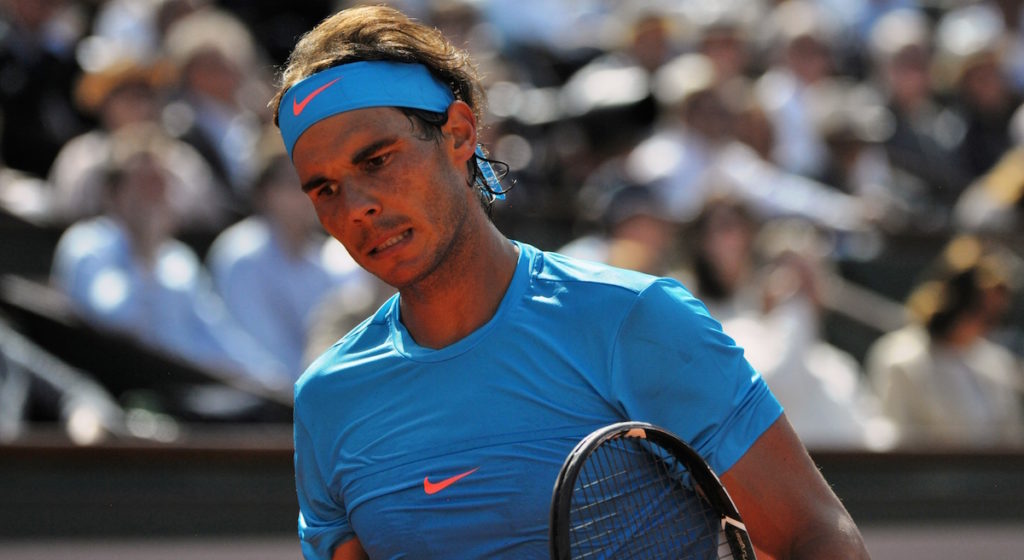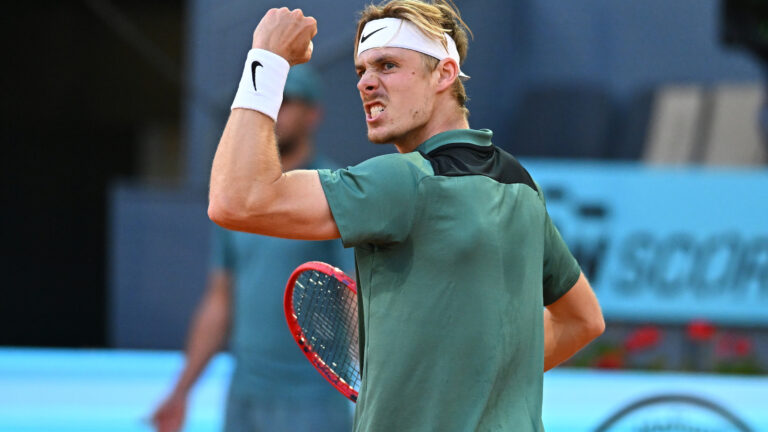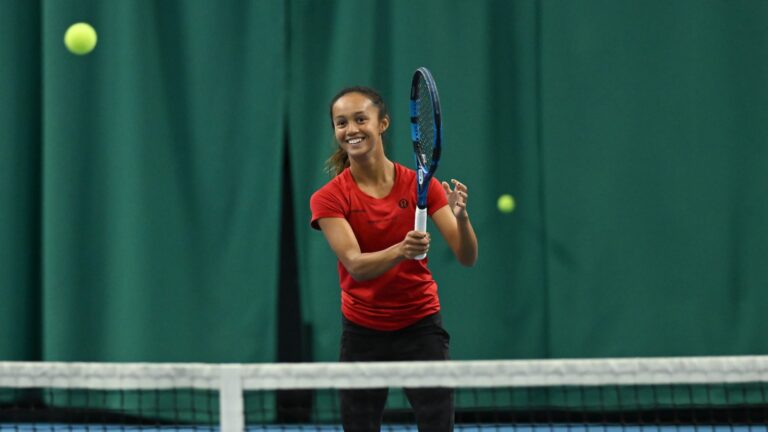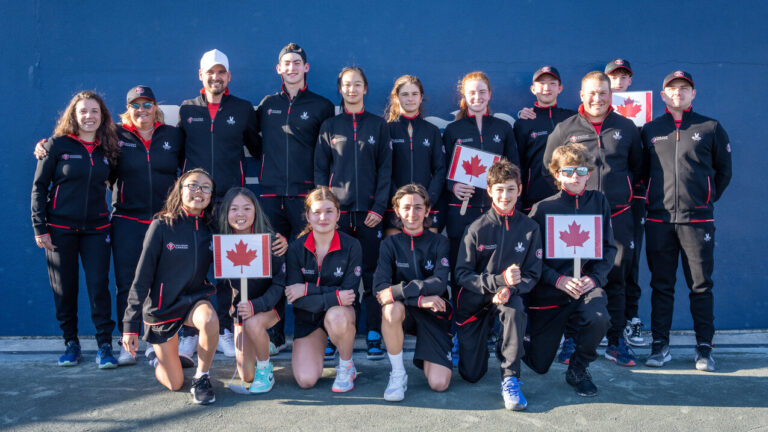
Rafael Nadal has won a record nine French Opens. In 2004, the year before the first of those nine titles in 10 years, he was playing old junior rival Richard Gasquet on clay at the ATP event in Estoril, Portugal. He had a sore left foot but insisted on completing the second-round match which he won 6-4, 3-6, 6-2.
It turned out the foot problem was a stress fracture and it would keep him out of action for three months – preventing him from playing his first French Open at age 17.
It’s not impossible he could have won that 2004 Roland Garros title. The winner that year was the unlikeliest of the Open Era – Gaston Gaudio. So who knows?
Who knows is also the question of the moment about Nadal’s tennis as he nears his 30th birthday on June third – semifinal day at the 2016 French Open.
He’s currently ranked No. 5 in the world with 4,880 points. Below is how he stacks up against the other players at the very top:
- Novak Djokovic: 16,790
- Andy Murray: 8,855
- Roger Federer: 8,795
- Stan Wawrinka: 5,870
- Rafael Nadal: 4,880
That’s unfamiliar territory for Nadal – more than three times fewer points than Djokovic and barely half of what Murray and Federer have.
After a right wrist injury in 2014 kept him off the tour following Wimbledon until the fall, and a subsequent appendectomy resulted in a further disruption, in 2015 he was basically injury and illness-free.
That makes it all the more concerning for Rafa fans that he had such a modest year by his standards – his only titles were at ATP 250 events in Buenos Aires and Stuttgart as well as at the ATP 500 in Hamburg.
It’s also remarkable that he did no better than two quarter-finals (Australian and French Opens) at the Grand Slams and made only one Masters 1000 final – losing on clay in Madrid to Andy Murray by a 6-3, 6-2 score in what was arguably his worst performance of the whole year.
Maybe most telling was that he did not win a title on European clay in the spring – a time of year when he used to be able to run the table.
He also lost all four meetings with Djokovic and didn’t win a set: 6-3, 6-3 in Monte Carlo, 7-5, 6-3, 6-1 at Roland Garros, 6-2, 6-2 in Beijing and 6-3, 6-3 in the ATP World Tour Finals. That has continued into 2016 with a 6-1, 6-2 loss to the sensational Serb in the final of the first tournament of the new season in Doha.
There were also three losses to Fabio Fognini, a talented but volatile player – on clay in Rio de Janeiro and Barcelona and then, most disturbing for Nadal aficionados, a defeat from two-sets up 3-6, 4-6, 6-4, 6-3, 6-4 in the US Open third round.
Nadal, a gutsy competitor in the mold of Jimmy Connors, Michael Chang and Lleyton Hewitt, losing from two sets up in a Grand Slam?

The Nadal downtrend has carried on into 2016. In the first round of the Australian Open, he lost 7-6(6), 4-6, 3-6, 7-6(4), 6-2 to 32-year-old Fernando Verdasco.
Then just this past Saturday at the Argentina Open in Buenos Aires, 22-year-old Dominic Thiem of Austria was tougher at crunch-time, saving a match point with a bold inside/out forehand winner on his way to his first win over the Spaniard.
Watching Nadal, something comes to mind that came to mind while witnessing counter-punchers like Michael Chang and Lleyton Hewitt in their declines – he just misses more. Running forehand passing shots that used to scream past opponents for outright winners now land a foot or two wide in the tramlines. And the highly-topspun cross-court forehand that was once so intimidating doesn’t seem to strike fear in players equipped to respond with solid backhands.
Most worrisome of all are his nerves. There were untimely double faults in both the match against Verdasco in Melbourne and Thiem in Buenos Aires that were completely out of character. At 6-all in the first–set tiebreak against Verdasco, Nadal double-faulted feebly about halfway up the net. The same on the very first point of the third-set tiebreak against Thiem – another ‘collapsed’ double fault into the net that gave the Austrian a mini-break and the separation that he was eventually able to ride to victory.
Those kinds of double faults – long by a couple of inches doesn’t seem as bad as lamely into the net – must be mystifying for Nadal. It’s as if a force that he could once rely on to elevate his game in crucial moments is suddenly working against him.
At the end of last year, he said he was going to work hard in the off-season to try to put the disappointments of 2015 behind him and bounce back.
What he said then sounded a lot like what he is now saying following the loss to Thiem: “It was a tough match. I had a chance to win and missed it but Thiem played well.
“I’m not worried. I just lacked consistency and need to make fewer unforced errors. But that’s nothing.”
This week he is the top seed at the ATP 500 in Rio de Janeiro where he starts out against No. 66-ranked compatriot Pablo Carreno Busta with another Spaniard, revitalized Nicolas Almagro, possibly waiting in the second round.
Last week, Nadal struggled in the first set against spindly, 34-year-old Paolo Lorenzi, finally winning 7-6(3), 6-2 in the second round. At his best, Nadal would have thrashed the lightweight Italian. So no one can be taken for granted these days.

There has been speculation that it might be time to get rid of his one and only coach – uncle Toni Nadal – but Rafa is a very loyal guy and another coach wouldn’t be able to alter the fact that he has lost a bit in his movement and strength all the while becoming more vulnerable to self doubt.
Roger Federer, five years older than Nadal at 34, is still playing tennis that may be almost as good as during his prime. The difference being that the other players at the top, most obviously Djokovic, have improved. Nadal, on the contrary, has clearly dropped a notch.
Tennis fans invest years establishing a connection with players like Federer and Nadal. Few of them want to see their heroes losing it and no longer having the aura of their glory days. They want to believe they are still threats.
As for Nadal, he is such a great champion – 14 Grand Slam titles overall – that it would be presumptuous and disrespectful to suggest he cannot win another Grand Slam.
Still, it’s now safe to say that the dominance he has showed in the past – even on the clay courts where he once won 81 matches in a row between April 2005 and May 2007 – is destined to never be the same again.
Pospisil/Mahut rule in Rotterdam

Vasek Pospisil notched the sixth doubles title of his career on Sunday when he and Nicolas Mahut of France won the ATP 500 event in Rotterdam, defeating Philipp Petzschner and Alexander Peya 7-6(2), 6-4 in the final.
The win was worth 53,550 euros or $82,326 Can. for Pospisil and moved his doubles ranking up three spots to No. 16.
It was the 11th career title for the 34-year-old Mahut, winner of the 2015 US Open doubles title with compatriot Pierre-Hugues Herbert. He also had a busy week in singles, reaching the semifinals where he had three match points before losing to eventual champion Martin Klizan.
Pospisil has long been viewed as one of the more personable players on the tour, and the same can be said of Mahut.
In 2010, following his unforgettable 70-68 loss in the fifth set to John Isner at Wimbledon, Mahut visited the offices of the French sporting daily L’Equipe in Paris.
He stayed for more than four hours and when he left the L’Equipe journalists thanked him for spending time with them. He quickly turned the tables insisting he was the one who should be doing the thanking because he was a longtime reader of the paper and appreciated having been given a behind-the-scenes look.
High-flying Flavia and Fabio
💚 is in the air in #Rio & on top the famous Christ the Redeemer with @fabiofogna and @flavia_pennetta! https://t.co/hn2FmYbqqc #rioopen #ATP
— ATP Tour (@atptour) February 14, 2016
Fabio Fognini and his fiancée Flavia Pennetta enjoyed the sites in Rio de Janeiro where the current world No. 24 is playing in the ATP 500 event this week.


